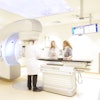CHICAGO - Pseudoprogression, an increase in the size of high-grade brain tumors that may occur following radiation therapy and chemotherapy, occurs in pediatric cancer patients as frequently as it does in adults, according to researchers from the University of Rochester Medical Center in Rochester, NY.
While conducting the study to document the frequency of pseudoprogression in children, the researchers also discovered that unlike adult pseudoprogression, the condition occurred in both high-grade and low-grade tumors and also was observed after any type of therapeutic intervention.
As a result of these findings, radiologists should use caution when interpreting worsening MRI exam changes in children with brain tumors that occur shortly after surgery or radiation therapy, recommended lead investigator Dr. Sheema Chawla, a radiation oncology resident.
The findings of the retrospective study of 181 patients under 21 years of age who received treatment for brain tumors at the University of Rochester Medical Center between 2000 and 2008 were presented at the American Society for Radiation Oncology's (ASTRO) annual meeting held in Chicago November 1-5.
The cohort included patients who had at least three MRI scans following completion of therapy. The researchers identified 21 patients who had pseudoprogression, or 14% of the total. Adult pseudoprogression has been documented as occurring in 10% to 40% of patients following treatment. But unlike adult pseudoprogression, in the pediatric patients 98% of cases were associated with low-grade lesions and only 2% with high-grade lesions.
Pseudoprogression was identified two to eight months following treatment, with a median time of two months, and stabilized, diminished, or disappeared entirely over one to 7.6 months (median of 3.4 months).
More than half of the patients (57%) were identified with pseudoprogression following radiation therapy, and 14% following radiation and chemotherapy, Chawla said. Six patients developed pseudoprogression after surgery alone. For adult patients, pseudoprogression is associated with radiation therapy and chemotherapy as a treatment-related effect.
Two clinically symptomatic patients required surgery, and for one patient, severe postradiation changes with a small focus of tumor were pathologically identified. Five patients required treatment with steroids and one required cyst drainage.
Noting that the patient cohort was small, Chawla suggested that other cancer centers conduct research to further quantify the frequency and occurrence associated with different types of treatment.
Copyright © 2009 AuntMinnie.com



















